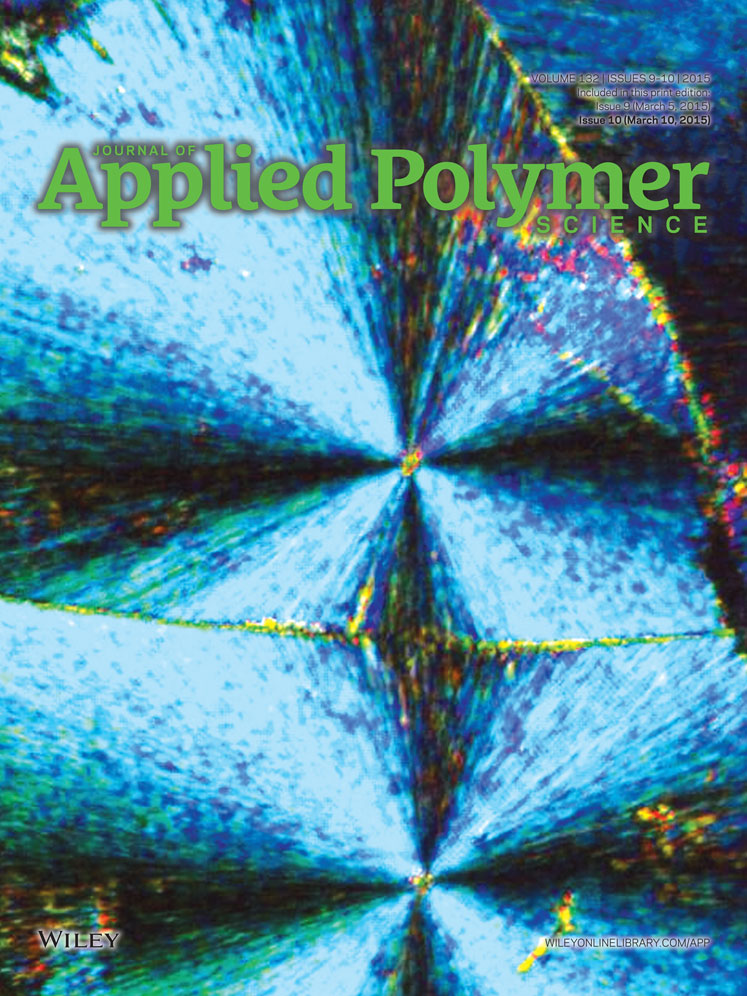Synergistic effect between silicone-containing macromolecular charring agent and ammonium polyphosphate in flame retardant polypropylene
ABSTRACT
A novel silicone-containing macromolecular charring agent (Si-MCA) was synthesized via polycondensation, and it was combined with ammonium polyphosphate (APP) to flame retard polypropylene (PP). The results showed that Si-MCA exhibited a good synergistic effect with APP in flame retardant PP. When the content of APP was 18.7 wt % and Si-MCA was 6.3 wt %, the limiting oxygen index value of the PP/APP/Si-MCA composite was 33.5%, and the vertical burning (UL 94) test classed a V-0 rating. The peak heat release rate, total heat release, average mass loss rate, and total smoke production of the composite were also decreased significantly. Moreover, the PP/APP/Si-MCA composite showed an outstanding water resistance. After soaking in 70°C water for 168 h, the PP/APP/Si-MCA composite could still reach a UL 94 V-0 rating at 20.0 wt % IFR loading, whereas the PP/APP/PER composite failed to pass the UL 94 test even at 25.0 wt % IFR loading. Thermogravimetric analysis, thermogravimetry-Fourier transform infrared spectrometry, and scanning electron microscopy-energy dispersive X-ray spectrometry results revealed that a compact and thermostable intumescent char was formed by APP/Si-MCA during burning, thus effectively improved the flame retardancy of PP. The possible synergistic mechanism between APP and Si-MCA was also discussed. © 2014 Wiley Periodicals, Inc. J. Appl. Polym. Sci. 2015, 132, 41580.




